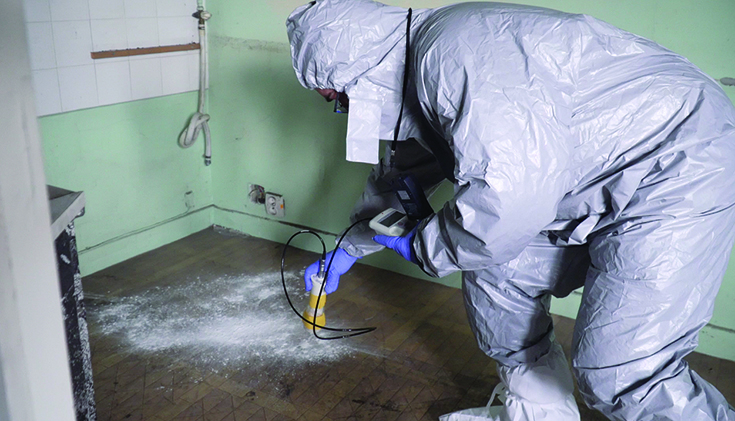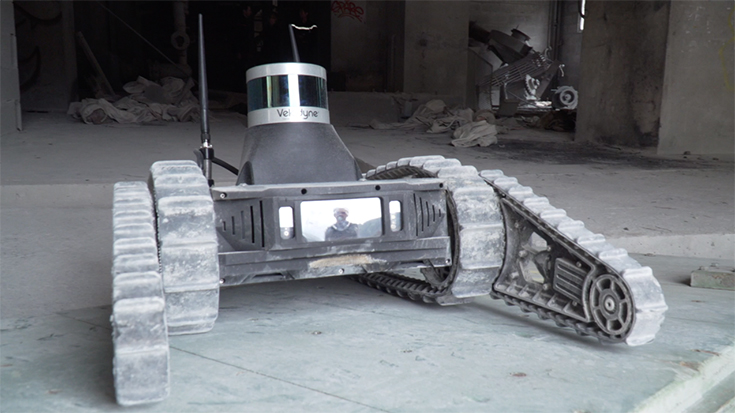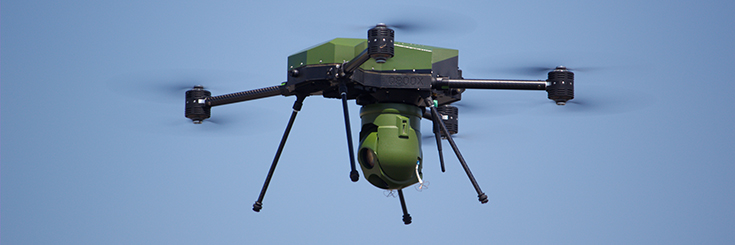How the TERRIFIC project is helping CBRN first responders
Rob Munro outlines the TERRIFFIC – Tools for early and Effective Reconnaissance in cbRne Incidents providing First responders Faster Information and enabling better management of the Control zone – project and the many benefits it will bring to the critial initial response to CBRNe incidents.

(Image: Istock /Arndt Vladimir)
March 4, 2018, is a date no one involved in CBRN response will forget in a hurry. The former Russian double spy, Sergei Skripal, and his daughter, Yulia, were poisoned with the Novichok nerve agent in the city of Salisbury in the UK. Both have recovered from the attack, although tragically local resident, Dawn Sturgess, subsequently died after coming into contact with the agent, which was contained in a perfume dispenser.
The initial minutes and hours of a response to any CBRNe incident, are absolutely critical. Responders aim to contain the most severe consequences, stop the ongoing criminal or terrorist threat, save victims, manage the crime scene and organise an effective response. This is also the time when first responders are most at risk as the nature, extent and intensity of the contamination is still unknown and secondary devices or contaminated objects may still be present.
Fewer risks for the response team
The TERRIFFIC project , which has received funding from the European Union’s Horizon 2020 research and innovation programme, will deliver a step change in the effectiveness of first responders during the first 30 minutes of a Radiological, Nuclear, explosive (RNe) incident.
It will lead to reduced response time, fewer risks for the response team and less human intervention in the operation due to a higher number of automated processes and extended mobile detection capabilities.
TERRIFFIC will enrich the broader European response to RNe events by developing a set of modular technology components in a comprehensive system. These will include new detectors, drones, robots, dispersion models, augmented reality software, information management and decision support systems. The project will also provide detailed information on the applicability of some developments within a chemical and biological (C/B) context, so although the focus is on RNe, the outcomes are intended to have a wider impact.
“Within TERRIFFIC, we are developing a mobile Augmented Reality system that is designed to plug over the top of the UAV and the robots and the sensors to provide a magic eye view of the incident,” explained Mike Griffin of the Luxembourg Institute of Science and Technology, one of the project’s technical partners.

First TERRIFFIC Trial, Chambéry, France (Image: Laurent Walle / TLA)
Trialling components with French firefighters
All aspects of the project are practitioner driven. Leading edge technologies will be provided by the R&D partners, whereas key innovative components will be developed by SMEs already involved in military or first responder markets. The practitioners will be strongly involved throughout the development process, components assessment and technology trialling.
Chambéry, not far from the Lac du Bourget in France, was the venue in April 2019 for the first TERRIFFIC Trial – an initial assessment of the existing technologies in the TERRIFFIC components. This three-day training and assessment event, hosted by SDIS73, the French fire service for the Savoie region, allowed the technical team to create a baseline, from which future development and integration work can progress. Several different radiation scenarios were utilised to challenge the components in both indoor and outdoor environments, providing a baseline to evaluate the effectiveness and the potential of the various technologies.
Lt Col Denis Giordan of SDIS73 emphasised the aspirations of the project by saying: “I hope that TERRIFFIC will be able to help the safety of first responders and specialised responders and to improve the tactical situation analysis.”
TERRIFFIC components were also used during the eNOTICE Trial in Gurcy, France, in May 2019 to demonstrate the augmented value of drone and robot use for first responders. Run by SDIS77 at its training centre, this trial involved 600 participants from the police and fire services, as well as representatives from the French Ministry of the Interior and the European Commission. The results were impressive.

Nexter Robotics Nerva-XX UGV (Image: Beate Kreisel)
Following on from what was learnt during these trials, the technical team will continue to develop and evolve these technologies – both independently and as an integrated system. Subsequent trials, with the ongoing involvement of practitioners, will help to ensure that TERRIFFIC can really make a difference to first responders involved in the initial response to an RNe incident.
To watch the video of the first Trial, get involved in TERRIFFIC or to find out more about the project, please click here

AerAccess Q800X UAV (Image: AerAccess)
This project has received funding from the European Union’s Horizon 2020 research and innovation programme under grant agreement No 786729. The views expressed in this press release reflect the views of the authors. The European Commission is not liable for its content and the use that may be made of the information contained herein.
Rob Munro, 22/10/2019